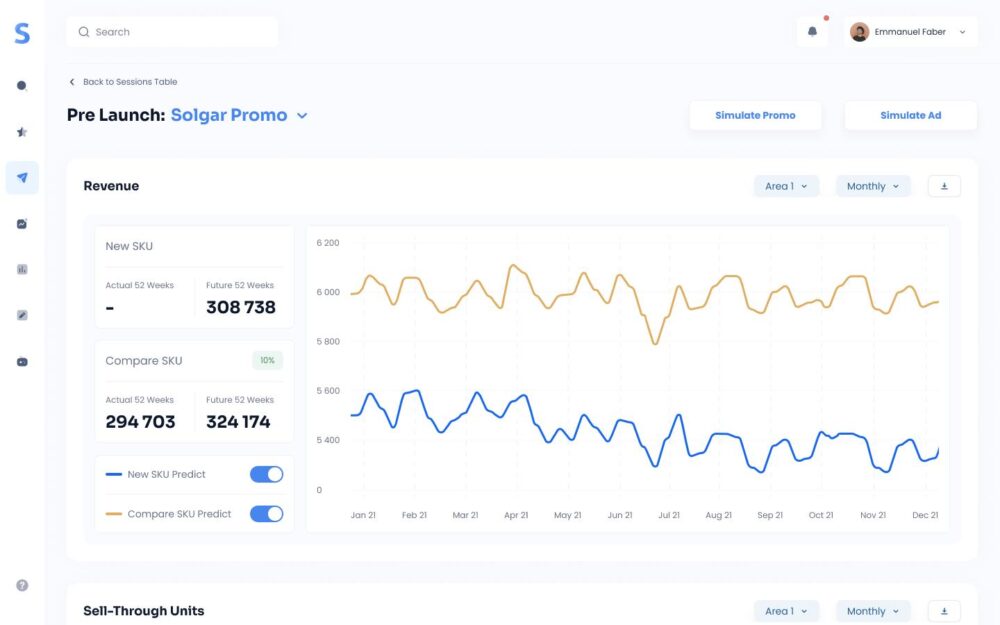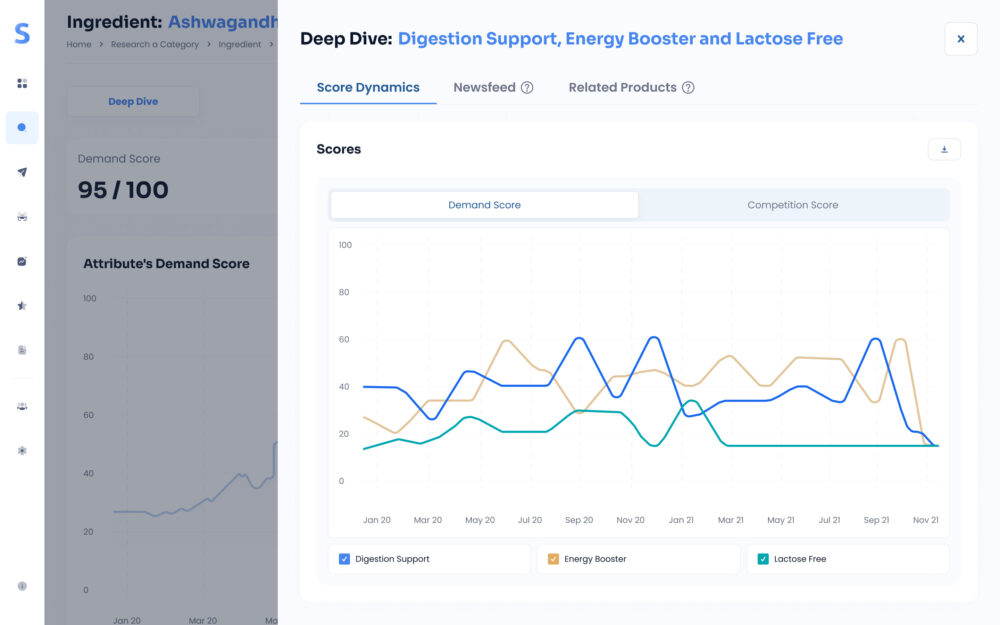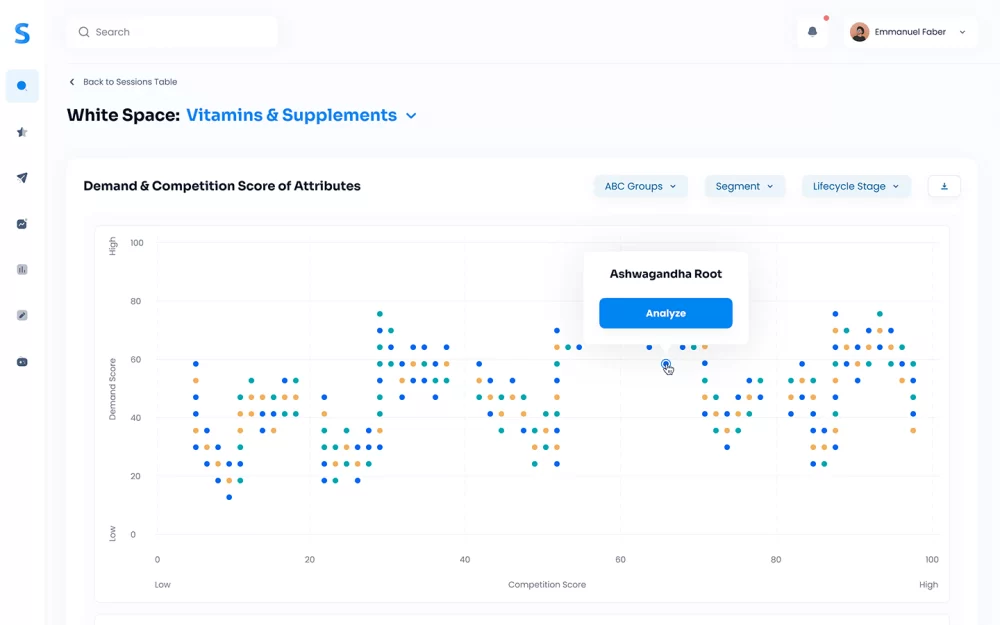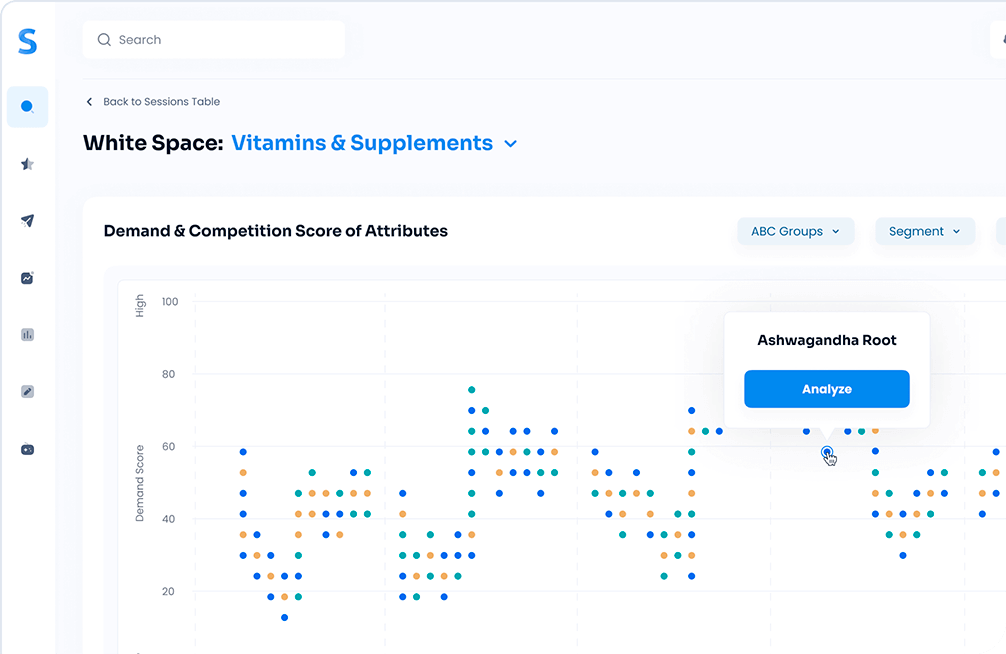In the dynamic world of business, the way we make decisions has undergone a seismic shift. We no longer depend solely on intuition or experience. Instead, data has become the new oil, fueling informed decisions that drive business growth. Especially in the Consumer Packaged Goods (CPG) industry, where competition is fierce and consumer preferences shift rapidly, data plays a pivotal role.
Now, picture a reality where this invaluable data is readily accessible and interpretable, enabling firms to make strategic moves with confidence. This isn’t some futuristic concept – it’s the transformative power of advanced analytics. By harnessing this potential, businesses can turn mountains of raw data into actionable insights that inform their product development strategies, making this seemingly complex process more efficient, less risky, and more successful.
So, how does this all tie in with the CPG industry, and what is the real significance of data-backed decision-making in product development? Let’s delve in and explore.
The Need for Data-Backed Decision-Making in the CPG Industry

The Consumer Packaged Goods (CPG) industry is a complex ecosystem fraught with numerous challenges. High competition, rapidly evolving consumer behaviors, a growing assortment of product offerings – these are just a few of the many obstacles that businesses face daily. The advent of globalization and digital channels has further amplified these challenges, with brands now competing for consumer attention across a myriad of touchpoints.
Amid this volatility, making uninformed or purely intuition-based decisions can lead to missed opportunities and even business risks. Traditionally, companies leaned on historical sales data and market research to steer their strategies. However, these methods have become less effective as consumer landscapes continually shift at an unprecedented speed.
This is where data-backed decision-making becomes invaluable. With access to a multitude of data sources – from social media sentiment and online reviews to search data – businesses can now gain real-time insights into consumer trends and preferences. Leveraging this data equips companies to anticipate market changes, identify growth areas, and devise strategies that keep them ahead of the competition.
In essence, data is no longer a luxury, but a necessity for survival and success in the CPG industry. Especially in product development, using data-backed decisions is critical to ensure that products resonate with the target audience and stand out in the crowded marketplace. It’s not just about staying in the game, it’s about winning.
What does ‘Data-Backed Decision Making’ mean?

“Data-Backed Decision Making” might sound like a buzzword that’s been making rounds in the business world, but it’s much more than just a passing trend. It represents a significant shift in the way organizations approach their strategic choices, particularly in product development.
In its simplest form, data-backed decision-making is the process of making business decisions based on data analysis rather than intuition or observation alone. It involves collecting data from various sources, processing it to extract relevant insights, and then using these insights to inform decisions.
This process is a stark contrast to traditional decision-making methods, which often rely on past experience, gut feelings, or qualitative observations. While these methods have their place, they fall short when it comes to handling the complexity and pace of today’s consumer markets.
Data-backed decision making, on the other hand, allows businesses to base their strategies on hard evidence. It offers a more objective and reliable approach to decision making, helping to mitigate risk, identify opportunities, and ultimately, drive more effective product development. It’s about taking the guesswork out of strategy and letting data lead the way.
Benefits of Data-Backed Decision Making in Product Development

When applied to product development, data-backed decision-making offers an array of tangible benefits. Let’s explore three of the key advantages: improved forecasting, enhanced product performance, and risk mitigation.
1. Improved Forecasting: Navigating the complex landscape of consumer demands can often feel like gazing into a crystal ball. With data-backed decision making, businesses can replace guesswork with precision. By capturing and analyzing various data sources, from social media mentions and search data to eCommerce reviews and product descriptions, businesses can better understand and anticipate consumer trends. This comprehensive view of market dynamics paves the way for improved forecasting, enabling companies to develop products that are not just responsive, but proactive, meeting consumers’ needs before they even articulate them.
2. Enhanced Product Performance: Data doesn’t just inform what products to create but also how to optimize them. With access to detailed attribute data, businesses can refine product features, design, and messaging to align with what consumers genuinely want. This, in turn, can lead to better product performance in the market. Additionally, with advanced analytics, businesses can combine attributes into concept development, leading to the creation of high-performing product concepts. It’s like having a secret recipe for a blockbuster product!
3. Risk Mitigation: Launching a new product into the market is inherently risky. Data-backed decision-making can significantly minimize this risk. By forecasting sales and incremental sales before a product launch, businesses can assess the potential success of a product, allowing them to tweak strategies or pivot entirely if needed. This proactive approach to risk management can save not just resources but also protect brand reputation in the long run.
In a world where businesses are constantly racing against time and competition to launch the next big thing, adopting a data-backed decision-making approach is more than a smart move. It’s a game-changer, providing businesses with the tools they need to make informed decisions, stay competitive, and steer their product development strategies towards success.
The Role of Advanced Analytics

As powerful as data is, its true potential can only be unlocked with the help of advanced analytics. While data provides the raw materials, advanced analytics is the craftsman that molds these materials into a form that businesses can understand and use.
Advanced analytics refers to the sophisticated techniques and technologies used to understand complex patterns within large and varied data sets. It involves various fields such as machine learning, predictive modeling, and data mining, which help derive meaningful, actionable insights from raw, often unstructured data.
In the context of product development, advanced analytics plays a vital role in interpreting the large volumes of consumer data available today. By doing so, it provides a granular understanding of consumer preferences, behaviors, and needs. This detailed knowledge allows businesses to develop products that are in sync with what consumers desire, thus increasing the likelihood of success in the market.
But advanced analytics doesn’t stop at understanding the present; it’s also about predicting the future. Predictive analytics, a subset of advanced analytics, uses historical data to forecast future outcomes. This capability is especially valuable in product development, where understanding future trends can provide a significant competitive advantage.
Finally, advanced analytics can aid in concept development. By analyzing different attributes and their influence on product success, businesses can devise winning product concepts. It’s about taking the puzzle pieces that data provides and using advanced analytics to put them together into a cohesive picture.
In conclusion, while data is the fuel for decision-making, advanced analytics is the engine that drives it. By harnessing advanced analytics, businesses can make the most of their data, enabling them to make more informed, effective decisions in their product development journey.
Future of Product Development with Data-Backed Decision Making and Advanced Analytics

The future of product development in the CPG industry is a journey into more sophisticated, data-centric strategies. As we move into this new era, data-backed decision making and advanced analytics are set to be at the helm, guiding companies through the increasingly complex waters of consumer needs and market dynamics.
One of the key drivers of this transformation is the integration of Artificial Intelligence (AI) into the decision-making process. AI can not only automate the data analysis process but also derive insights from data sets far too large for humans to handle efficiently. This enables faster, more accurate predictions, empowering businesses to act proactively rather than reactively.
A significant part of this AI-powered future is predictive modeling tools, like Simporter’s tool. Simporter leverages AI to analyze vast amounts of data and provides actionable insights into product trends, ingredients, sensory attributes, and need states.
What sets Simporter apart is its ability to explore uncharted territory in the consumer market – the so-called ‘white space’. Here’s how it works:
- Predicting Trends: The tool captures and analyzes data from various sources such as Instagram mentions, eCommerce reviews, product descriptions, and search data to identify emerging trends. This not only enables businesses to stay ahead of the curve but also to pioneer trends, essentially shaping the market themselves.
- Concept Development: Simporter’s tool takes things a step further by applying these insights to concept development. It allows businesses to combine different attributes to create new product concepts and even generates concept descriptions automatically, using AI.
- Concept Testing: Once a product concept is developed, it can be tested within the same tool, providing an efficient, streamlined process. The tool gives a total score for each concept, allowing businesses to rank top concepts based on the attributes and their influence in a product concept.
- Sales Forecasting: Before launching a product, the tool can forecast sales and incremental sales, providing businesses with valuable foresight into a product’s potential success.
By integrating these capabilities into the product development process, businesses can navigate the ‘white space’ more confidently. They can innovate with a clearer understanding of their target audience’s needs, driving the creation of products that truly resonate.
As we look towards the future of product development, it’s clear that the combination of data-backed decision making, advanced analytics, and AI is more than just a trend. It’s a seismic shift that’s set to redefine how businesses understand and engage with their consumers. And in this new landscape, tools like Simporter’s White Space are not just optional extras but essential navigation aids, guiding businesses towards a future of data-driven success.
Conclusion
As we’ve explored throughout this article, the role of data-backed decision making and advanced analytics in product development is not just pivotal, but transformational. As the CPG industry evolves, these tools are proving invaluable for companies looking to navigate the intricacies of consumer needs, market dynamics, and the challenges of innovation.
We’ve underscored the tangible benefits of data-backed decision making, from improved forecasting and enhanced product performance to risk mitigation. And we’ve seen how advanced analytics can turn raw data into actionable insights, providing businesses with a granular understanding of consumer behaviors and future trends.
Looking forward, the integration of AI into the decision-making process heralds a new era of product development. Tools like Simporter’s White Space are at the forefront of this shift, leveraging AI to analyze vast amounts of data, predict trends, aid in concept development, test concepts, and forecast sales.

As we step into the future, the message is clear: Embracing data-backed decision making and advanced analytics isn’t just an option; it’s a must for businesses looking to thrive in the rapidly changing landscape of the CPG industry.
Now is the time for your business to embrace this shift, harness the power of your data, and shape your product development strategy for a future of success. The future is data-backed, and it’s time you take the lead.









